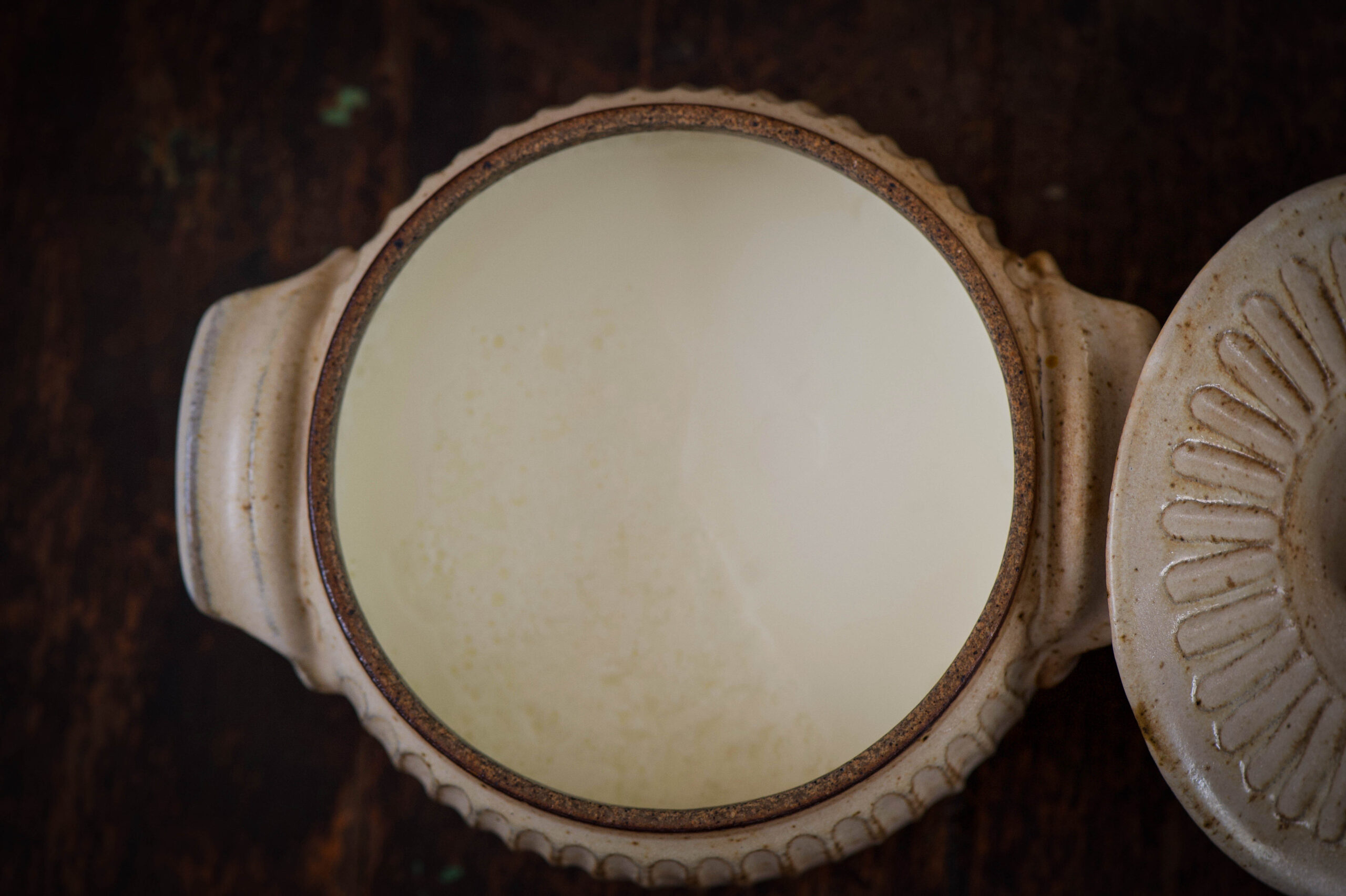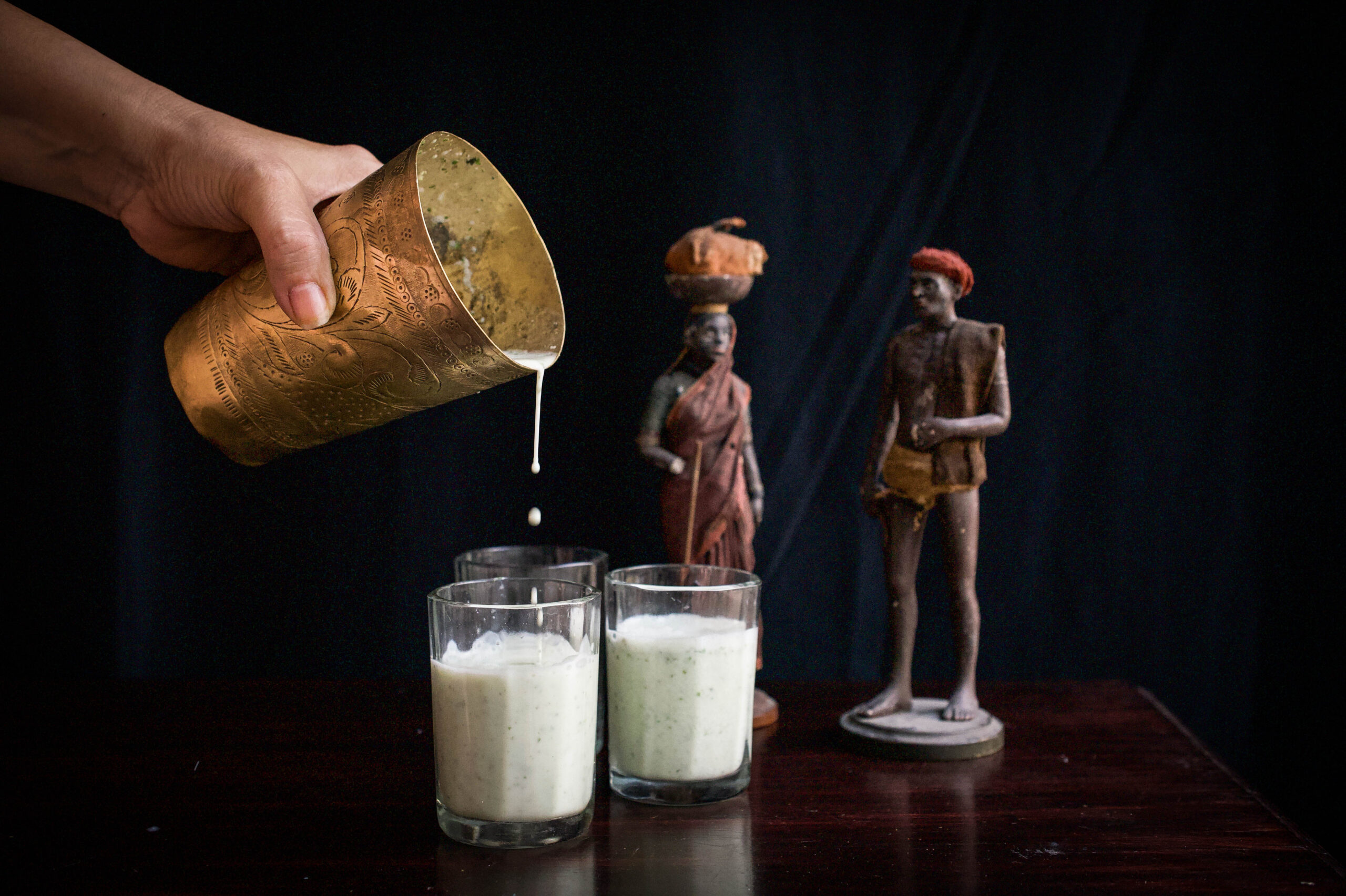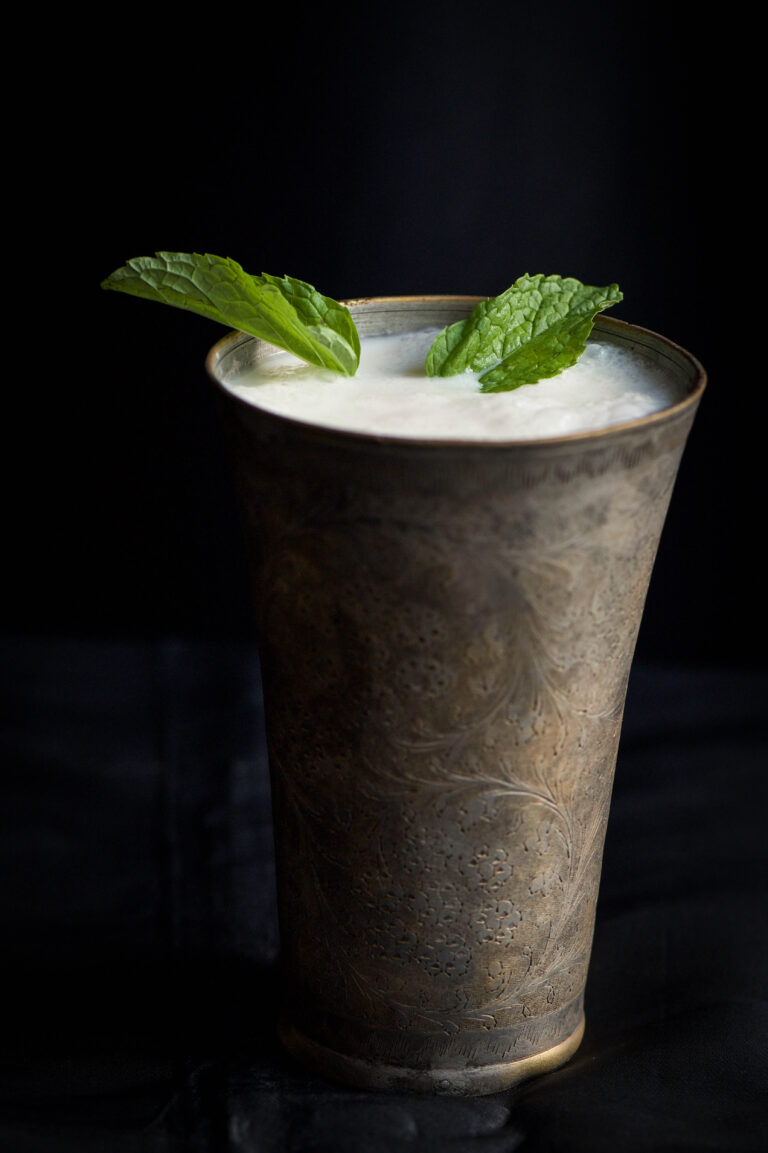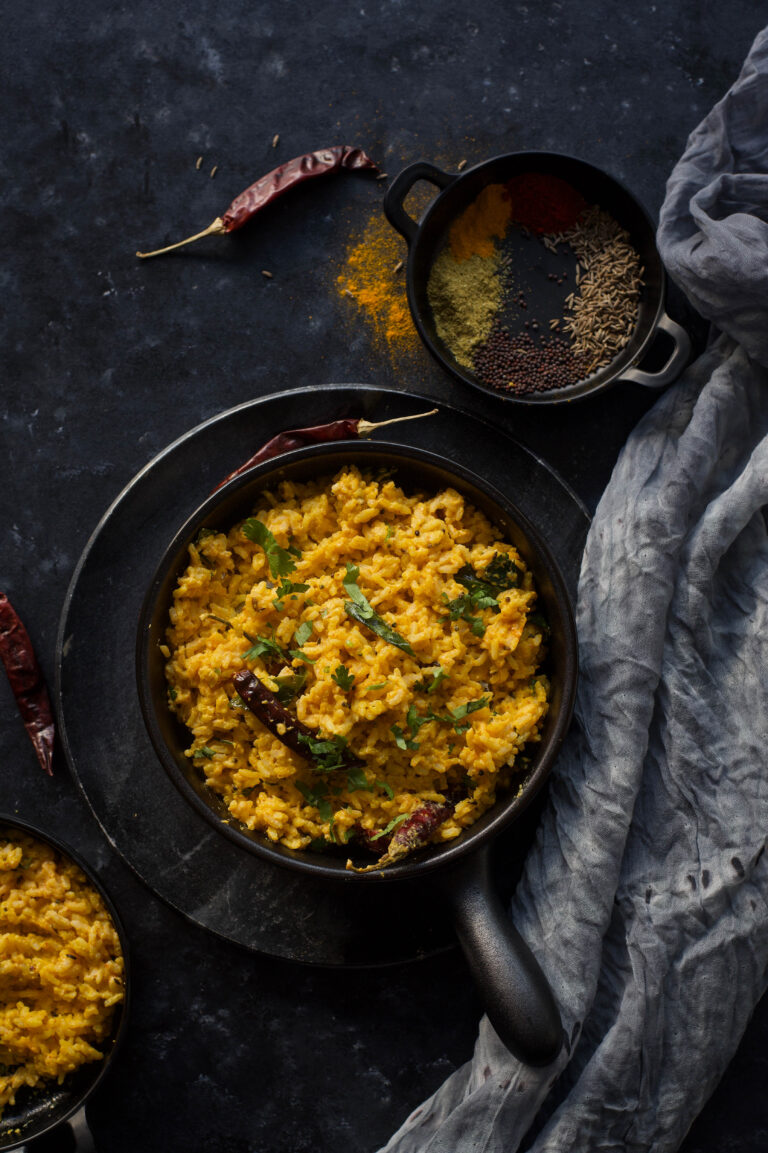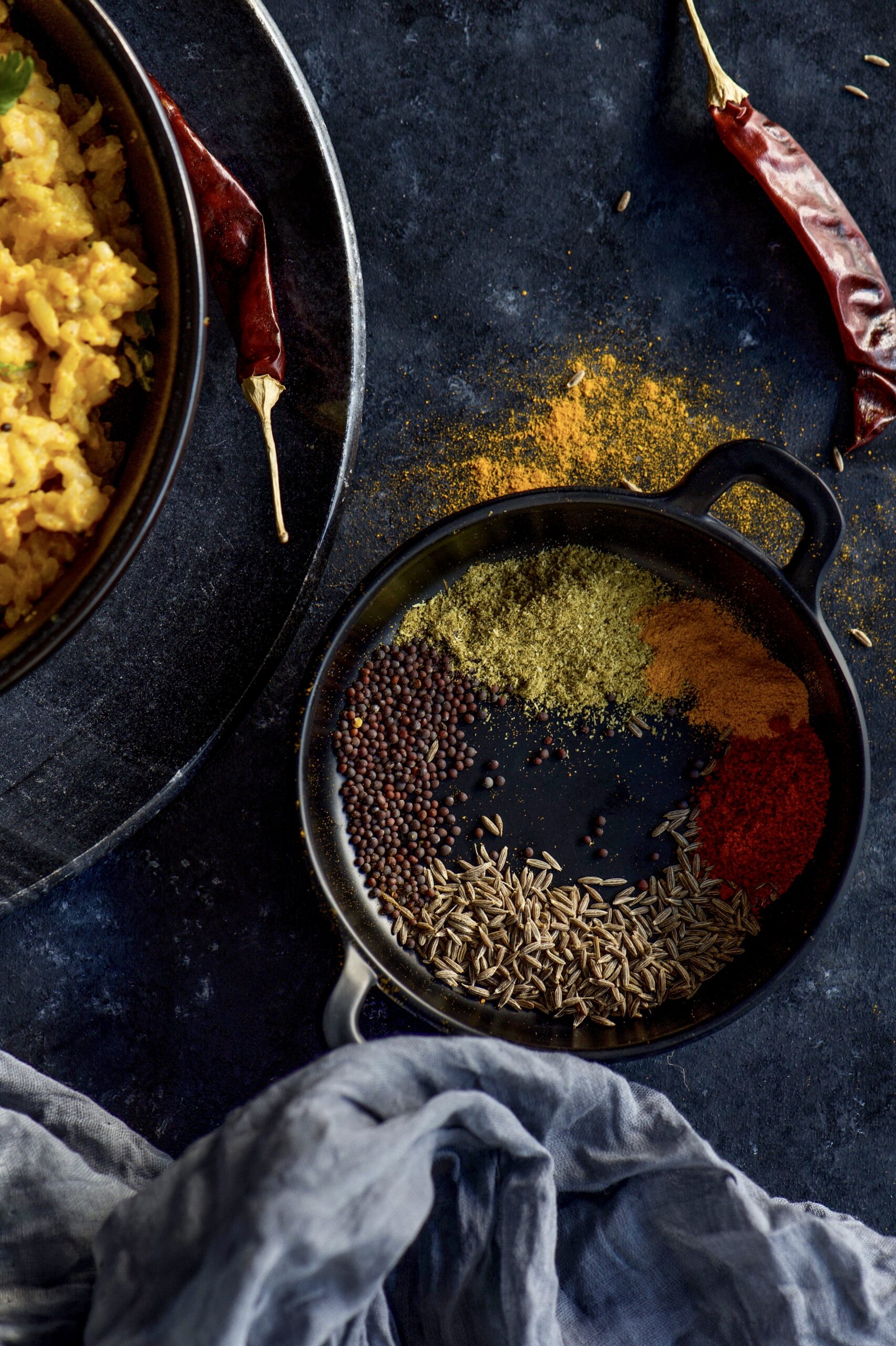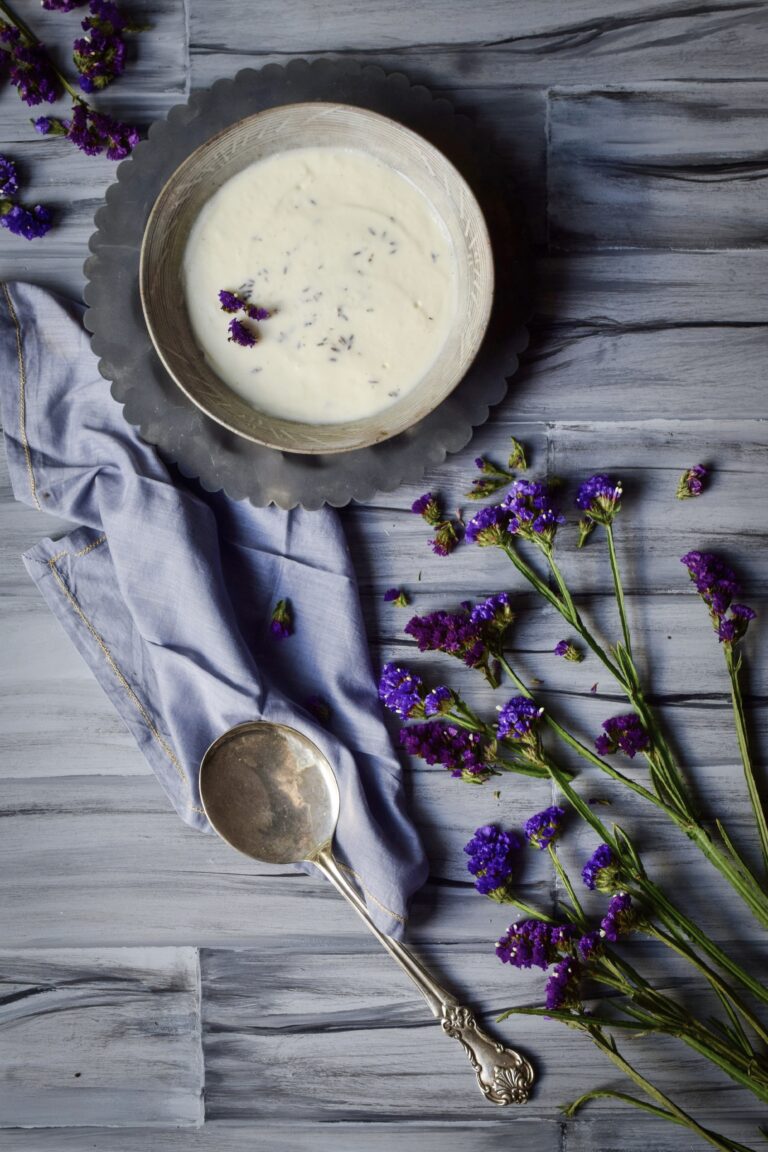I must have yoghurt with every single meal – a meal is never complete without it, and I am never full! I have tried over the years to go vegan and all that jazz but my love for yoghurt makes this impossible. I can give up milk, but yoghurt? Never. In fact, I loved it so much as a child that my mother had to ration it – she restricted me to a single cup per meal. But how I loved that one cup!
In South India, we take our yoghurt seriously. It has to be perfect – it should not be too sour, it should not have a thin film on top, and it should be smooth not broken. This is how it must be served at the table – and you can be assured that it is served at every table.
I have a friend in Barcelona who visits me each year and takes back a little bit of the yoghurt culture as a starter to make her own. The temperature, quantity of culture and the quality of the milk are very important. Yet, somehow, yoghurt is also very simple to make, which is why it is made in households every single day without fail. I wish sourdough was as easy to make. If you follow me on Instagram, you’d have seen my attempts and adventures at sourdough on my Instastories!
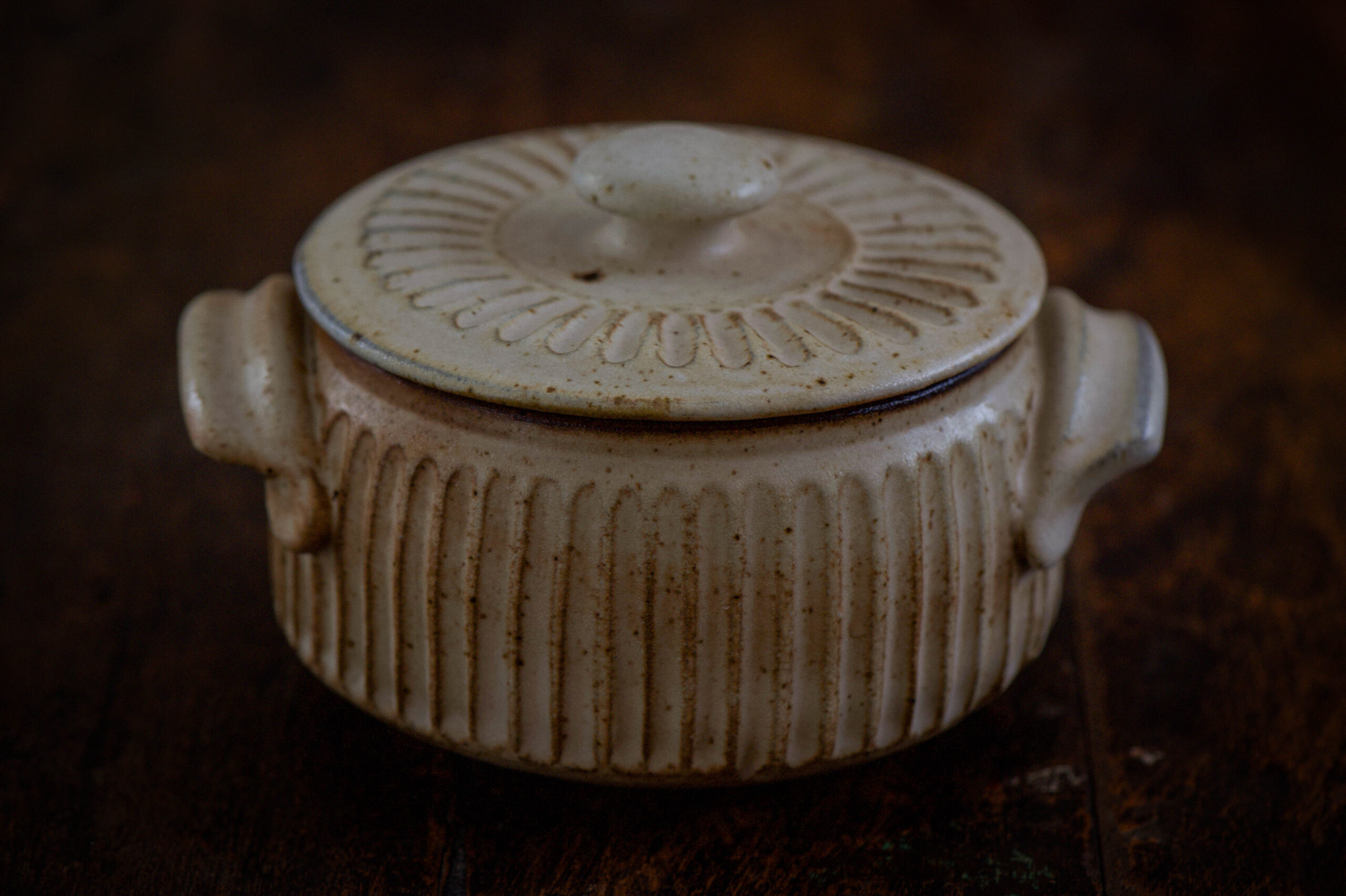
Traditionally, in my home, we set the yoghurt in an earthenware or stoneware pot. I set it both in the mornings and in the evenings, so that we have it fresh at both lunch and dinner. Yoghurt usually sours within a day, so it is one of the ingredients that is often used in leftover-based dishes. Refrigeration can prolong this slightly.
It sets faster in the summers, within 5 to 6 hours. In cooler months, if you set it just before bed, you will certainly be able to have it first thing in the morning. But be warned that these standards are for my climate, here in India. When I visited my son in New York last winter, he had a craving for homemade yoghurt. In the depths of icy November, it took two whole days to set!
So many of my summer stories revolve around my grandparents’ home in Vijayawada. If you went down memory lane with me and my aunt’s rose sherbet or their vetiver-scented curtains which inspired my chia pudding, here is one more from my childhood memories to enjoy: spiced buttermilk. It is a flavour I remember from those summers with my cousins, when we would each be given 25 paisa to go buy ourselves a treat. Someone would get soda, someone would get raw mango slices… My favourite was guava, but buttermilk was what we were always encouraged to have, for its health benefits. What I’ll share with you today is my friend Anandhi’s recipe, made with her guidance. Its core ingredient is homemade yoghurt.
Both yoghurt and buttermilk are great for digestion, and have a cooling effect on the body, which is why they are summer essentials. If you love your dairy like I do – with apologies to my vegan and lactose-intolerant friends! – you’ll absolutely love being able to switch from store-bought yoghurt. After a while, setting it becomes a habit, and it’s always so delicious when it’s fresh.
Spiced Buttermilk
(Yield: Approximately 5 glasses)
Ingredients
1 cup yoghurt
1 teaspoon roasted cumin powder
1 teaspoon grated ginger
1 tablespoon finely chopped coriander leaves
1 finely chopped green chilli
Salt to taste
3 cups water
A dash of lemon
1 pinch asafoetida (optional)
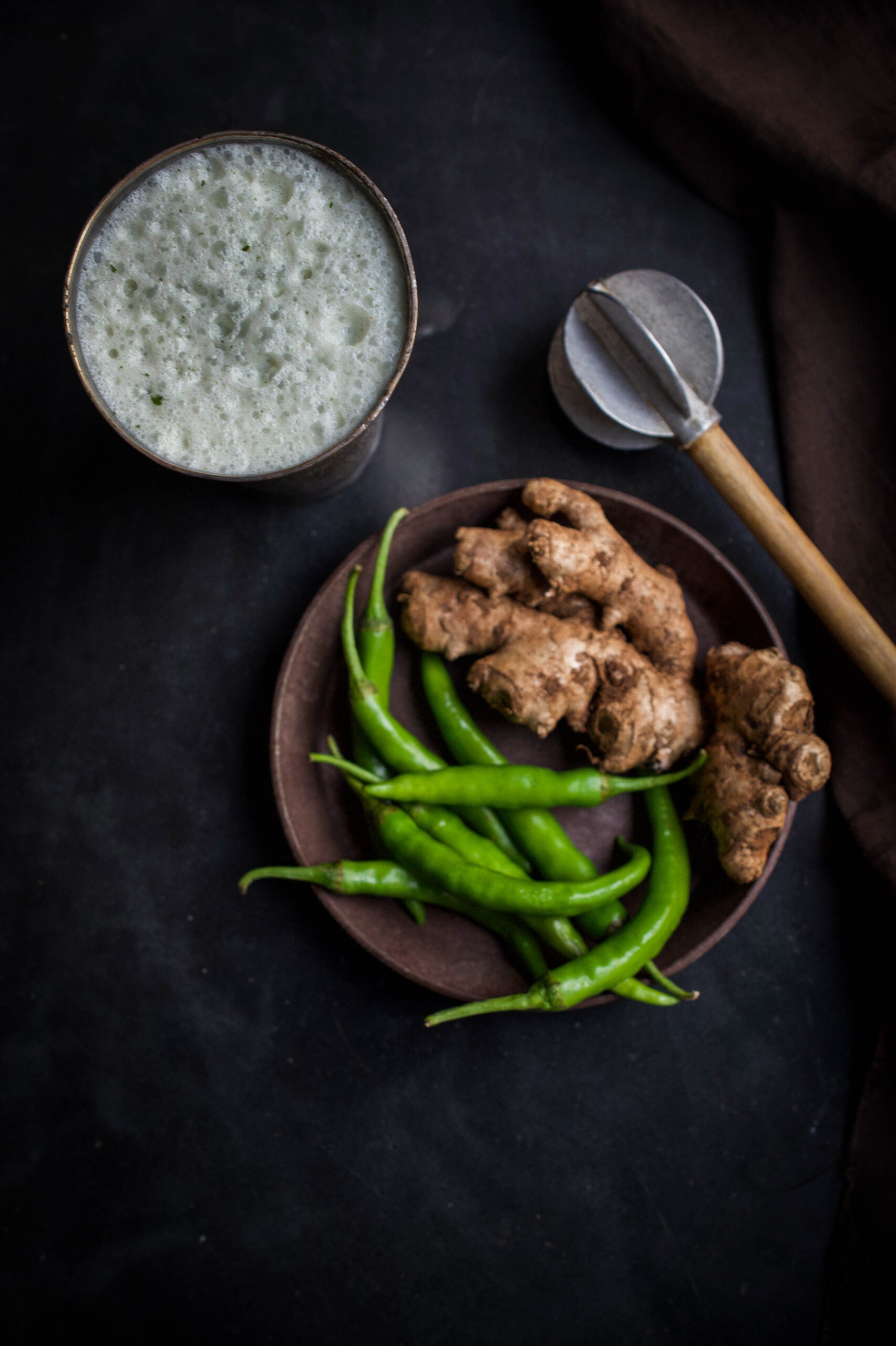
In a blender, add all the ingredients, except the water, and whir until everything is well blended. Now add the 3 cups of water. You can adjust the consistency by increasing or reducing the quantity of water to your preference. The dash of lemon gives you a little spring of energy, and the spices add such delicious flavours to the drink. Serve immediately.
Known for its probiotic properties, buttermilk acts as a coolant in the summer months, especially when eating heat-inducing mangoes is a full time pleasure!
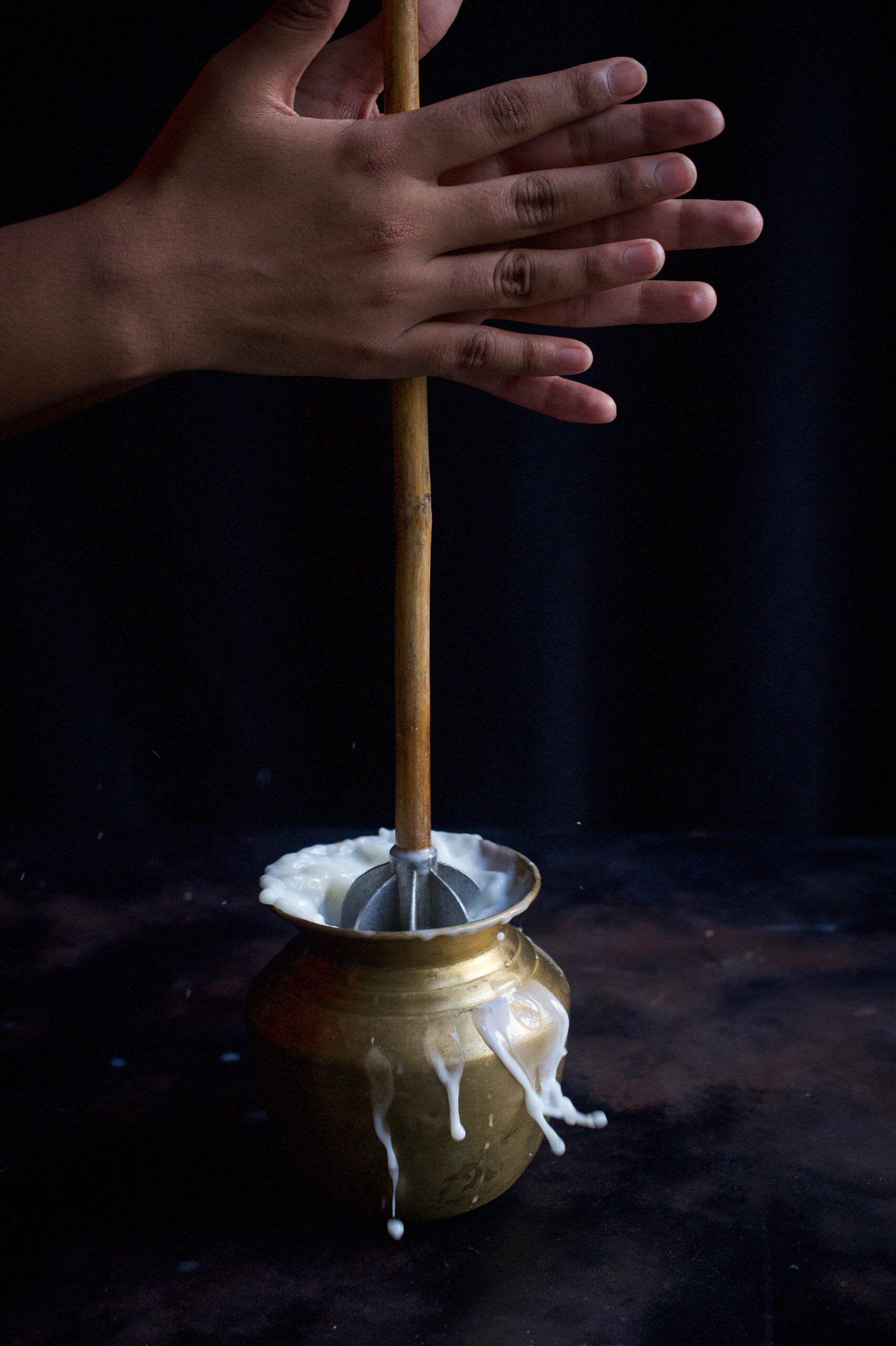
Homemade Yoghurt
As I said earlier, setting yoghurt is both very delicate and very easy. To set the yoghurt, the temperature of the room, the temperature of the milk and the quantity of the starter are all very important in order for the yoghurt to be plain and not sour.
In India, where summers are very hot, I add a ¼ teaspoon of starter yoghurt to a bowl and pour room temperature milk into it. I then cover it with a lid and set it aside for 5-6 hours. Do the same if you are working in a similar climate. After the stated time, open the lid and see that the milk is set and rather tight when moved a little. Now refrigerate. Serve whenever you please.
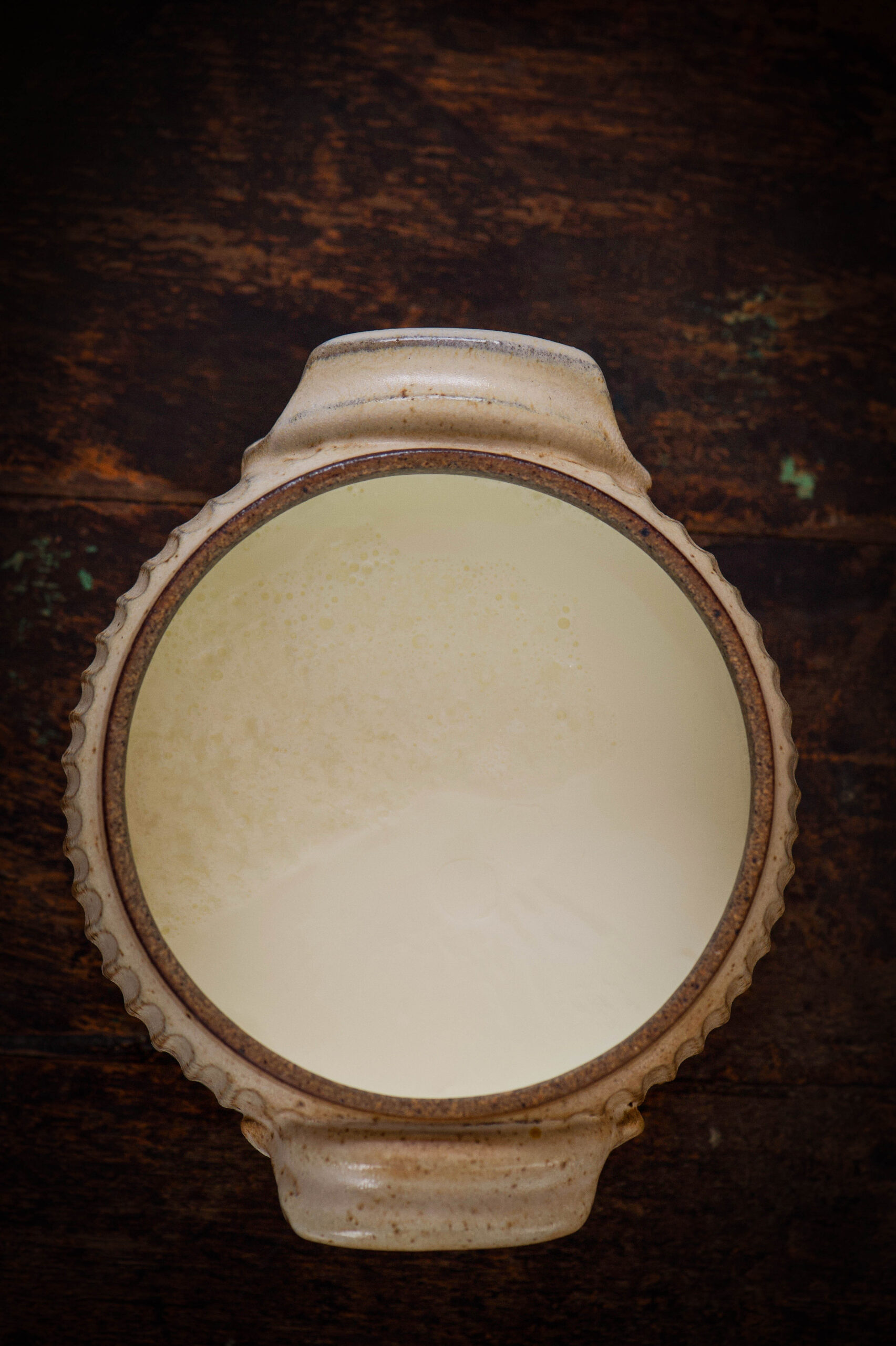
During the winters, warm the milk and increase the quantity of the starter to ½ or even 1 teaspoon. Cover, and keep in a warm place for 10-12 hours or until set.
I am not a fan of sour yoghurt so refrigerating it once set is key, so it stays fresh for longer.
I’d much rather make my own yoghurt at home, where I know what exactly goes into it, as I’m always cautious about my food as far as possible.
This is the yoghurt I use when making buttermilk, as well as my regular accompaniment to my major meals. Yoghurt with rice, yoghurt with rotli, and of course, yoghurt with re:store’s bestselling muesli. It goes so well with everything, in my opinion!
I’d love to hear in the comments about how you’re keeping cool this summer!
